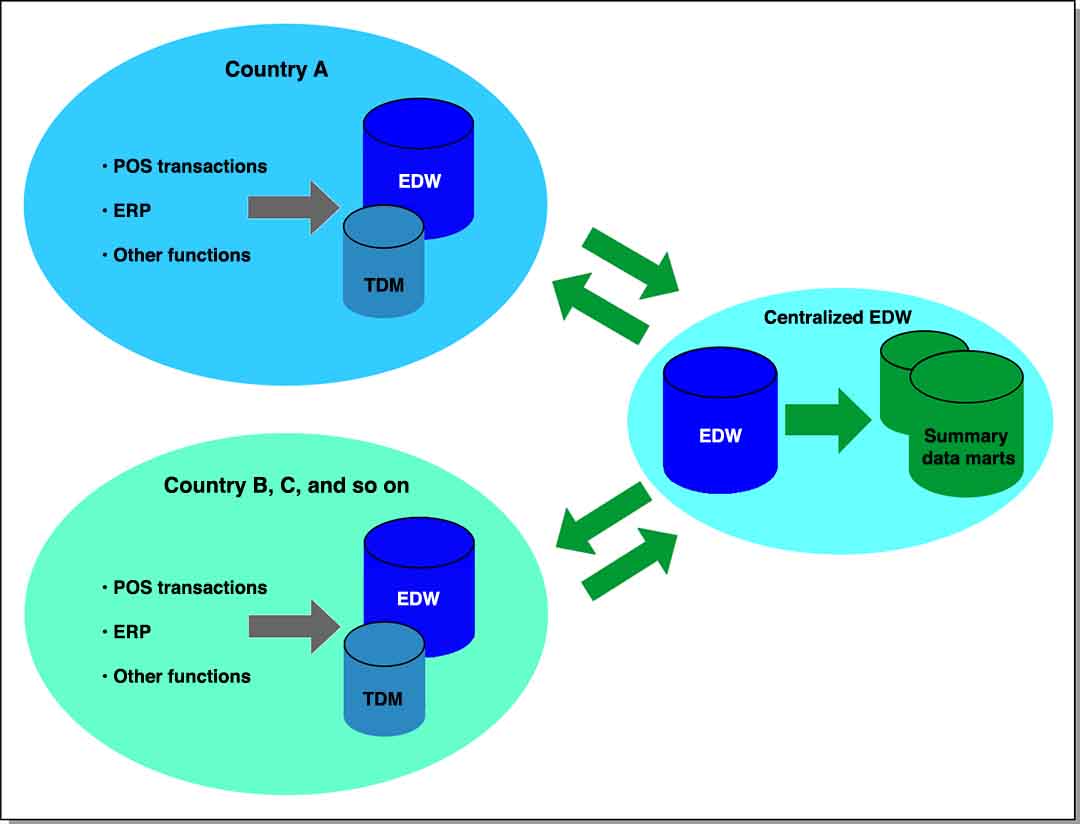A data warehouse is regarded as a system that is actually used for data analysis and reporting. Data warehouses are nothing but central repositories comprising integrated data from multiple sources. Data warehouse has been defined as an integrated, subject-oriented, non-volatile and time-variant collection of data for supporting decision making process of an organization’s management.
Features of Data Warehouse
Integrated: Integrated as it is the harmonizing of source data coming from diverse application systems across the enterprise. Source data is usually inconsistent because of different formats. Integrated data source is actually made consistent for presenting a unified data to the users.
Subject-Oriented: Data warehouse is actually subject-oriented as the data is organized as per the major subjects such as sales, customers, products etc. and not in terms of key application areas such as stock control, product sales and customer invoicing. Data warehouse has been designed for supporting decision making and not application oriented data.
Non-volatile: The data is refreshed at regular intervals and is not updated as per real time. New data is incorporated into the database as a supplement to it and not as a replacement. The database carries on absorbing new data continuously and integrates it with the existing data.
Time-Variant: It is considered to be time-variant as data found in the warehouse is valid and accurate.
Some Striking Benefits of Data Warehouses
Data warehousing is very effective in delivering enhanced Business Intelligence. Data warehouses provide data from diverse sources. Thanks to them executives and managers would not require taking any business decision based on restricted data. They no longer need to depend on their gut feeling for making important business decisions.
Business users are now able to have easy access to critical data from a multitude of sources, but all data are centralized and available in one place. This facilitates rapid decision-making. We know that accurate data is the backbone of robust business decisions. Data warehouses provide precise and error-free data. They are known to offer historical intelligence. They help in generating a high return on investment.
The Pitfalls of Managing a Data Warehouse
Intricacy of Integration
One of the most crucial aspects of data warehousing and management is handling the integration. There are a number of tools which are to be implemented, and hence the administrators will need to think long and hard as to how they can integrate these into a cohesive solution. It is mandatory for an organization to invest a remarkable amount of time in determining how nicely the diverse data warehouse tools could be integrated right into the desired complete solution. This could be a pretty challenging task since there are multiple tools for practically, every data warehouse operation.
End-User Demands Are Augmented
Once some of the end-users’ queries are fulfilled, there would be an increasing demand for support from staff. This has been caused by enhanced user awareness of the data warehouse value.
Data Loading Resources are underestimated
Sometimes the time needed for extracting, cleaning and loading data into the warehouses, may be underestimated. It might take a remarkable proportion of the entire development time, even though some effective tools are present that may be utilized for minimizing your time and effort invested in this particular project.
Relevant Data Not Captured
Often in certain cases the data needed is actually not apprehended by the varied source systems. That could be of great importance for data warehouse purpose.
Homogenization
Data warehousing essentially involves dealing with data of similar formats from different sources. This leads to loss of a certain amount of data. This phenomenon is called homogenization.
High Maintenance
It is not an easy job to maintain a data warehouse. Firstly, it takes as long as three years to get the setup up and running. Dealing with issues could be a complex process, and reorganization and refurbishment take a large amount of time and money, and may upset the entire system. You will also be required to deal with huge amounts of data.
Ownership of Data
Sometimes, ownership of data may be an issue. Since the data changes hands from the owner to the warehouse for collaboration, it may lead to reluctance of sorts, as some owners would not like to share sensitive data.
